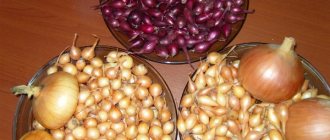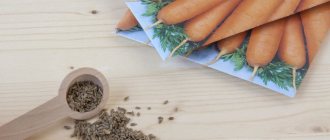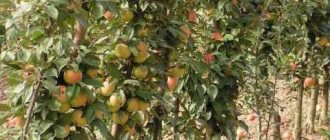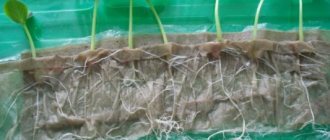For stone fruit crops, the optimal time for placement on the site is the beginning of the growing season before sap flow. Planting cherry seedlings in open ground in the spring will give a positive result if the variety suits the climate and the work is carried out taking into account the requirements of agricultural technology. The tree will grow normally with sufficient light and in fertile, neutral soil.
Features of planting cherries in spring
The berry crop is widespread in Russia from the south to the Far North. The plant is characterized by standard agricultural technology, takes root well in a new place, and bears fruit abundantly every season. Popular varieties are created on the basis of the common cherry, which, due to its high frost resistance and undemanding watering, is capable of growing in all climatic zones.
Depending on the variety, the harvest is harvested in the 4th-5th year of the growing season; the tree retains the ability to bear fruit for more than 30 years. All the positive aspects of a crop are fully revealed if the biological needs of the tree or shrub are taken into account when planting.
When determining the location on the site, the following factors are taken into account. For photosynthesis, the plant needs a sufficient amount of ultraviolet radiation; in the shade, the growing season will be incomplete, so the yield and quality of the berries may suffer. Place the plant on southern or eastern slopes; an open, unshaded area is suitable.
Cherry does not react well to gusts of north wind and constant drafts, especially at the beginning of the season: during flowering and swelling of the buds.
For planting, choose a place protected by a wall or solid fence.
An adult tree is not afraid of being near large trees, but a seedling will not develop in the shade and in high humidity.
A drought-resistant crop can survive without water for a long time. The central deep root supplies enough moisture from the soil layers, young seedlings are watered regularly. The cherry growing season is early. At this time, there are no abnormally high temperatures, and the soil is sufficiently moistened by melting snow.
Excess water for young trees can be destructive. Therefore, when planting, do not consider lowlands where water accumulates from precipitation; for the same reason, ravines, wetlands and areas with close groundwater are not suitable. The horizontal part of the root system is deepened within 60 cm and extends beyond the crown boundary. With high humidity in a large area around the cherry, there is a risk of root rot, disease and even death of the plant.
When planting a crop, a novice gardener should not neglect determining the composition of the soil. Cherry will not be able to grow on acidic or alkaline soils; it requires neutral soils. The soil should be fertile, light, well aerated. Clay and sandy soils are not suitable for planting.
Important! The crop will bear fruit abundantly only on loam or sandy loam.
Planting cherries in spring has a number of advantages; a young tree has enough time before the onset of cold weather to form a strong root system for its age. During the growth period, gardeners will be able to determine by the condition of the seedling, errors made during planting, the appearance of pests or diseases, and also take measures to eliminate the problem.
What to do after planting cherries in open ground in spring
The most important thing to do after planting cherries in open ground in the spring is to trim the seedling to 0.5 meters in height. This care procedure is necessary to maintain a balance between the above-ground part and the root system. Thanks to this, the seedling will take root normally.
The first few months after the spring planting of cherries in open ground, it is especially important to frequently and regularly water the tree in the garden. On average, the watering rate is about two to three buckets of water. In the first place, watering should be done 1-2 times a week, depending on weather conditions.
If you have not mulched the soil in the tree trunk circle, then it is recommended to periodically loosen the soil after watering. Loosening must be combined with weed removal.
When is the best time to plant cherries in spring?
It is recommended to plant stone fruit crops in the spring; this condition is especially important for temperate climates. In the south, the planting season does not play a big role. If the cherry tree is placed on the site in the fall, it will have time to take root before frost and will immediately begin to build up its root mass in the spring. In climates with early and cold winters, there is a risk that the seedling will not survive the winter even with sufficient shelter, so the autumn months are not considered for planting.
Planting dates also depend on the weather conditions of the area.
Work is carried out when the soil has warmed up to +7 0C, and at night there are positive temperatures (+4-6 0C is enough for cherries).
Important! When planting, it is necessary to take into account the period of possible return frosts.
The sap flow of the crop is early, so you should have time to plant the tree before it starts. Then the plant will withstand stress more easily and take root faster. For the middle zone, the estimated planting time begins at the end of April and lasts until mid-May. In the Urals, the dates are shifted and planting is carried out 10 days later. In the southern climate, planting work is completed before mid-April.
Are cherries demanding on soil?
Cherry prefers sandy or loamy soil with a neutral or slightly alkaline reaction and well drained.
Heavy clay soil is completely unsuitable for cherries - such soil is diluted with sand.
To bring the soil for planting cherries to the required acid-base reaction, you need to determine whether the soil on the site is acidic or saline. To do this, you need to take a closer look at weeds that prefer one or another level of acidity.
The area for planting cherries is dug up, cleared of roots, weeds, debris and fertilizers are applied: compost or humus (at least 10 kg per 1 sq.m.).
Gardeners who prefer mineral fertilizers should refrain from adding nitrogen-containing components, since at the planting stage nitrogen can burn the roots of the seedling.
It is advisable to carry out all preparatory work with the soil in advance: in the fall - before spring planting, at least a month before autumn planting.
How to choose a cherry seedling for planting in spring
The most important thing in choosing planting material is not to make a mistake with the variety. Cherries from southern latitudes will not be able to grow in temperate climates due to poor winter hardiness. Frosts in the spring will be a particular threat to it, the buds will die, and the tree will not bear fruit.
Representatives with good winter hardiness will have a hard time withstanding high summer temperatures due to poor drought resistance. A variety is needed that is zoned in this area or adapted to its conditions.
Even with the right choice of variety, planting will not give a positive result if the planting material is of unsatisfactory quality. The basic requirements for a seedling are as follows:
- age not younger than one and not older than two years;
- the presence of healthy vegetative buds in a dormant state, planting cherries with leaves in the spring will be less successful. The plant may take root, but will be sick for a long time;
- the optimal height of a young tree is 1.5 m, the thickness of the central trunk is at least 1 cm, but the indicator depends on the variety and shape of the crown;
- increased attention is paid to the condition of the root. There should be no visible damage, signs of drying out or rot on the surface. This can only be considered for seedlings with an open root system;
- If planting material is purchased in a transport pot, pay attention to the condition of the soil. The soil should be moderately moist, without signs of mold and without foreign odors;
- The bark of young cherries is smooth, light brown in color; there should be no damaged areas.
Attention! Planting material must be purchased from nurseries located in the same climatic zone where it will grow.
If a heat-loving cherry is planted in Siberia, the plant will not take root and time for planting will be wasted.
Advantages and disadvantages of autumn planting
Rodents are pests that can destroy planted trees in the fall
Not all gardeners can do planting work in the summer or spring and therefore they have to plant cherries in the fall. Among the main advantages of autumn planting are the following:
- Easy to care for. Trees that are planted in September or October are quite easy to grow, since you do not have to carefully care for the cherries. The fact is that rainy autumn weather will provide the necessary level of humidity. The only thing you have to do is feed it before the cold weather sets in.
- Rooting. In autumn, the ground part of planted trees does not develop. The plant spends all resources on rooting and strengthening the root system.
Additional Information! When planting plants in the fall, you need to be prepared for the fact that they may suffer from pests.
In September and early October, rodents become more active and can damage the roots of immature trees. To protect the planted cherries, you need to set rodent traps in advance.
How to prepare the soil for planting cherries in spring
The planting area has been prepared since the fall. Determine the composition of the soil. If necessary, neutralize by adding dolomite flour (if the acidity is high) or granulated sulfur if the soil is alkaline. These events are repeated once every 4 years. An area of 1x1 m is dug up to a depth of 15-20 cm. This is a necessary measure to eliminate pests overwintering in the upper layers of the soil.
Preparing the site in the spring before planting
When preparing a hole in the fall, adding organic matter is not relevant. If a planting hole is made before planting, then compost, phosphate and potassium are added to the prepared area and covered with wood ash.
Procedure for pruning fruit trees
How to plant cherries in spring: a step-by-step guide
A step-by-step pruning process will help maintain healthy shoots. As a result, the gardens will look well-kept. During the process, all branches affected by diseases must be removed.
Before forming the crown of a tree, it is worth studying the growth characteristics of cherry trees in the spring:
- The fruit tree is characterized by a high rate of awakening and early ripening of the buds;
- a young shoot develops from the bud;
- the crown thickens in a short time;
- you cannot start the crown, as this will lead to darkening of its interior;
- flowering buds and harvest depend on each other;
- bouquet branches bear fruit for up to five years, after which they die.
Pruning cherry seedlings
There are 2 main ways to prune fruit trees.
Pruning
Pruning is carried out on those branches that have lengthened more than 40 cm. This will activate the process of formation of bouquet branches. And when the bouquets die, the branches will not be exposed.
Cherry has some features that should be taken into account when pruning:
- high early maturity and conductivity;
- rapid formation of branches;
- there should be no growths on the trunk;
- the remaining branches are cut into a ring.
The tree crown is formed using one of 3 methods:
- remove 1/4 of the total growth for the year;
- remove 1/3 part;
- remove 1/2 part.
Tenderloin
This method is designed to remove branches and shoots.
As a result of thinning:
- the crown diameter decreases;
- protecting the crown from strong thickening;
- air and light conditions improve;
- the appearance of fruit formations is activated.
During the pruning process, weak and diseased branches are removed first. Then those that interfere with others are cut off.
Preparing a hole for planting cherries in spring
Autumn work is carried out before the onset of frost: in a temperate climate around the end of September, for the south October is suitable. By this time, the caterpillars of the pests will go into the ground and disturbance of the top layer will be disastrous for them.
Tips for preparing a pit in the fall:
- The exact size of the recess is difficult to determine; it directly depends on the length and volume of the root.
- They focus on the average parameters, and adjust them when planting: 20 cm is allocated for drainage, 15-25 cm for the nutrient substrate, 15-20 cm for the height of the root to the neck. The depth must be at least 0.5 m.
- The width can be made the same, it is better to fill up the excess space, the main thing is that the plant does not feel cramped.
- The bottom of the hole is covered with a layer of large stone, construction waste in the form of broken bricks can be used, concrete fragments cannot be used. The next layer is coarse gravel. Complete the drainage pad with crushed stone.
This concludes the autumn preparations for planting.
The advantage of autumn work is that during the winter, drainage will settle under a layer of snow and the boundaries of the hole will be visible. By looking at the hole in spring, you can determine the depth of warming up of the earth.
Spring preparation of the planting hole is not much different. When the ground warms up, they dig up the soil. Leave the hole until the night frosts stop.
Preparing a hole for future cherries
Experienced gardeners know that the hole for planting must be prepared in advance - a month before planting the future tree. As a rule, the timing of planting cherries is recommended by agronomists in April. Accordingly, the pit needs to be prepared in March. The width and depth of the planting hole are standard for fruit trees and are 60 cm.
Dimensions are of great importance, since failure to comply with them will lead to the following:
- with low planting, poor development of the root system;
- at high temperatures, the roots overheat in summer and freeze in winter.
After digging a hole, its bottom must be fertilized with compost and potash fertilizers, at the rate of two buckets of compost and 50 grams. potassium to the pit.
It is not recommended to apply nitrogen fertilizers. Such organic matter leads to burns of the roots.
After applying fertilizer, it is necessary to centralize the planting hole using a peg. Placing the peg in the center insures the future seedling from the wind.
How to plant cherries in spring
Prepare planting material. If it has an open root, dip it in a pale pink solution of manganese and leave for 2 hours. Then dilute “Kornevin” or any drug that stimulates growth, immerse the root system in it, and soak for several hours. These measures are not carried out for planting material in a portable pot; in the nursery, the root is disinfected before sale.
Make a nutrient mixture from the top layer of soil (turf) and humus in equal parts. Sand is added to loamy soil, approximately ¼ of the volume; for sandy loam, this component is not needed. Then potassium and phosphate are added to 10 kg of the mixture. For planting you will need 15-20 kg of substrate.
In the table you can see the approximate doses of fertilizers required per hole
Step-by-step instructions on how to plant cherries in spring:
- Having shifted 10 cm from the center, drive in a stake.
- Divide the soil mixture into two parts.
- One is poured onto the drainage; if the root is open, then the mound is made in the form of a cone. The seedling is placed vertically on a hill.
- Distribute the roots over the ground and cover with the rest of the substrate to cover the root. Lightly compact with your hands.
- Then pour out the rest of the soil mixture and compact it.
- If there is not enough mixture, add soil from the top layer.
- Planting material purchased in a transport pot is filled with warm water and carefully removed from the container.
- They don’t make a hill at the bottom of the hole; they pour the mixture in an even layer, place the cherry on it along with a lump of earth and fill it to the top.
- If a young tree has soft protective material on its roots, it is removed and placed in a hole together with the soil, and covered in the same way.
A shallow trench is dug along the perimeter of the root circle; this is necessary to prevent water from spreading. Water it abundantly and tie it to a fixing stake so that the young tree does not break from the wind and the trunk is formed straight.
If it is necessary to plant plants in summer, use only material with protected roots. Planting cherries with a closed root system in the summer is carried out according to the same scheme as in the spring - together with a ball of earth. This must be done carefully, minimally injuring the seedling. To prevent the cherry from getting burned, after planting it is shaded during the midday hours.
Two-year-old closed-root cherries are suitable for planting even in summer
At what depth to plant cherries in spring?
The planting hole must be deep enough. The excess space can be filled with soil. If the depression is shallow, the work will have to be done again. The root collar should not be deepened (filled with soil) or raised too much above the surface. In the first case, rotting and the appearance of fungal infections are possible. In the second - drying of the root and death of the seedling.
Attention! The root collar is left raised 5-6 cm above ground level.
At what temperature to plant cherries in spring
The optimal temperature in the spring, when you can safely start planting a crop, is +5 0C; 3-4 0C is enough for the soil. But there are some nuances here, the seedling will calmly respond to this temperature regime; only return frosts pose a threat. After planting, cover the plant at night to preserve the buds; remove the protection for the day. When stable weather sets in, the measure will become irrelevant.
For the Ural region and Siberia, varieties have been created that grow in the form of a bush. These are plants with high winter hardiness. Planting bush cherries in spring can be done with zero soil warming. Daytime temperature is +2-30C, for this variety frosts do not pose a threat, you don’t have to cover the seedling, but it won’t be superfluous to be on the safe side.
Distance between cherry seedlings when planting in spring
Thickened planting of cherries in open ground in spring leads to poor circulation in the crown, bending of branches, and shading of young shoots with buds. If one cherry tree gets sick, the problem will appear on the one growing nearby. The same applies to pests; they quickly appear on neighboring trees. The distance between the holes when planting depends on the crop variety. If the tree is tall, with a spreading crown, maintain a distance of at least 2.5 m. Bush cherries are distributed at intervals of 2 m. For dwarf forms, 1.5 m is sufficient.
Arrangement of cherries in one line
Planting a cherry seedling in the ground
The planting technology is the same for different types of cherries and can be used in any region.
Preparing the planting hole
Usually the pit is prepared 2-3 weeks before planting. The technology is as follows:
- In the prepared soil, dig a hole 80 cm wide and 50 cm deep. Set the top fertile layer (20–30 cm) aside.
- Place a long (1.2 -1.5 m) stake in the center of the hole to secure the seedling after planting.
- Prepare the following mixture: humus or compost (10 kg) + superphosphate (200 - 300 g) + potassium salt (50 g) or ash (500 g) + removed humus. If your site has clay soil (it has a red-brown tint and sticks strongly to shoes after rain), then add 10 -15 kg of sand.
- Place a mound of substrate in the hole so that the top of the mound is level with the edge.
- Leave excess substrate at the edges of the pit.
If you want to plant a dwarf cherry, the composition of the fertilizer will be as follows: compost (7 kg) + superphosphate (35 g) + potassium chloride (20 g) + ash (100–200 g).
Planting a cherry seedling
- Prepare the seedling for planting. To do this, you need to first soak the dried roots for 3–4 hours in warm water. If the roots are damaged, you need to cut them to a healthy place and then soak them.
- After soaking, plant the seedling in the ground next to the stake on the north side, straighten the roots. Fill them with the remaining soil so that the root collar (the transition point of the stem into the root; as a rule, gardeners are guided by the first large root branch) remains on the surface. Gently compact the soil.
- Make a hole with a diameter of 20 cm around the seedling, pouring a small earthen bank 10 cm high along the edges. Tie the seedling to a peg using a figure eight, without over-tightening the trunk.
- Pour 15–20 liters of warm water into the hole. If after watering the root collar is exposed, then sprinkle it with soil.
- Mulch the hole with humus, peat or sawdust with a layer of 3–5 cm.
When planting cherries correctly, the root collar is above the soil surface
Planting cherries - video
Placing different types of cherries when planting
The main difference in planting different types of cherries is placing them at different distances from each other. Also, when preparing the site, take into account the characteristics of the variety. If you want to plant a self-sterile cherry (it will not produce a harvest without pollinating the flowers with cherry pollen of another variety), and there are no other cherry trees nearby, then for the best fruiting you will have to purchase at least 1 more seedling of a different variety (experts recommend not planting in this case less than 4 different varieties of seedlings). If you want to plant a large number of seedlings, then when planting it is better to place them in a checkerboard pattern.
| Type of cherry | Distance between trees |
| Tree-like | The distance between rows is 3 m, between plants in a row is 3 – 3.5 m |
| Bush-like | The distance between rows is 2 – 2.5 m, between plants in a row – 2.5 m |
| Felt | The distance between rows is 2 – 2.5 m, between plants in a row – 3 m |
| Columnar | The distance between rows is 2 m, between plants in a row is 2.5 m |
| Dwarf | The distance between rows is 1.5 – 2 m, between plants in a row – 2 m |
How to save a cherry seedling before planting in the spring
Cherry is a frost-resistant plant, so it is better to keep the seedlings on the site until spring. The harvest has been harvested, there is enough free space. Algorithm for storing seedlings until spring planting:
- The ditch is dug from west to east, its depth is equal to the height of the seedling minus 10 cm.
- The roots of the planting material are placed in water for 2 hours.
- The seedlings are placed at a distance of 15-30 cm from each other, the roots should face north and the branches should face south, and they are covered with earth up to the crown to form a ridge.
- After the first light frosts, the branches are covered with a dry mixture of earth and sawdust.
- Spread rodent repellent over the embankment.
- They put spruce branches on top, and in winter they make a snowdrift at the burial site.
Cherry propagation methods
Cherry propagation is possible in several ways.
Cuttings
When pruning in spring, you can select semi-lignified sections of 20-30 cm. You need to cut it so that there is a bud below and above the cuts.
Leaving the top 3-4 leaves and removing all the leaves below, the cuttings are placed in a solution of “Zircon”, “Heteroauxin” or “Kornevin”.
To plant cuttings, prepare a bed by carefully digging up the ground, removing all weeds and roots and adding humus and wood ash to the soil.
You can make a groove in the finished bed, or you can make small narrow holes every 10 cm. A layer of coarse sand is poured onto the bottom and watered.
The cuttings are placed vertically in the groove or holes, deepening them by 3–4 cm. They are filled in, the soil is pressed around the trunk and watered.
By covering the plantings with film, they create a small greenhouse for a constant microclimate.
Before the growth appears - a month and a half - you need to monitor the humidity, remove weeds and loosen the soil between the cuttings, and ventilate the greenhouse.
For the winter, rooted cuttings must be properly covered: mulched, covered with spruce branches. In spring - plant in a permanent place.
Root cuttings
Cherries have a superficial bark system, so it’s easy to dig up roots no closer than half a meter from the trunk, choose a suitable cutting with a bud or even a hatched sprout.
Having prepared the bed (see above), place the cuttings in a groove, fill them up, water them, and install a greenhouse. The care is the same as for ordinary cuttings.
Root growth
Having selected a young 1-2 year old cutting that has grown away from the mother tree, excavated the ground around it, separate the plant from the mother tree and plant it in a permanent place according to the usual pattern.
It is not worth choosing large and sufficiently developed specimens, since, feeding from the mother bush, the “child” did not grow a root system for itself.
A large seedling with a weak root system will take a long time and be difficult to take root.
IMPORTANT: All types of cuttings are carried out in the spring, in cloudy cool weather or in the evening.
Graft
By grafting cherries onto cherries, you can get varietal cherries. As a rootstock, you can use a young tree whose trunk diameter is already 5-7 cm.
It can be plum, cherry plum, even bird cherry of the “Antipka” variety.
Grafting work is carried out in the spring, when the plant juices have already started flowing. Deadlines are until mid-July.
Cuttings for grafting are cut before real frost to avoid freezing of the material (frozen cuttings are much weaker, their survival rate will be in question).
Sections up to 30 cm are tied into bundles and stored in the cellar. The best way to preserve cuttings is to place them before the first warmth of spring in a snow pile, where stable, near zero, temperature and humidity will preserve them until the right time.
Before the grafting procedure, the cut on the cutting is renewed.
There are two main types in grafting technology - budding (grafting with eyes and buds cut from a cutting) and copulation (grafting with harvested cuttings) and several methods of implementation.
The simplest one, which even a beginner can handle, is grafting cuttings into a cleft.
The stem of the rootstock is cut down evenly and cleaned, after which the stem is split in the center with a sharp knife. Depth of splitting is up to 10 cm.
The cuttings are cleaned with a wedge, the length of which is equal to the length of the split. The cuttings are placed in a split (there can be 2-3 of them if the diameter of the rootstock significantly exceeds the diameter of the cuttings) so that the edges of the cuttings coincide with the edge of the rootstock along the circumference line.
Along the entire length of the cleft, the rootstock is tightly wrapped with tape, and the cut of the rootstock itself is covered with garden varnish.
To create a greenhouse effect, the cuttings and rootstock are hidden in a bag tied to a branch.
Usually within a couple of weeks the vaccination takes root and the package is no longer needed. And the scotch tape should remain until the final fusion of the rootstock and scion.
Caring for cherry seedlings after planting in spring
Agricultural technology for caring for young cherries is simple:
- If a nutrient mixture is added during planting, there is no need to feed the plant. It will last the seedling for 3 years.
- To prevent the soil from drying out and becoming waterlogged, water it periodically, focusing on the frequency of precipitation.
- Formative pruning begins in the fourth year of the growing season.
- For preventative purposes, pest control is carried out in the spring, and chemicals are also used as needed during the season.
- Make sure that there are no weeds near the seedling.
- For the winter, cherries are hilled up and the trunk is wrapped in burlap.
- Mulch in the spring, and in the fall the layer is renewed and increased.
Good and bad neighbor plants
The development of a tree, its productivity and the quality of the fruit depends largely on the trees growing in the immediate vicinity.
It is not recommended to plant cherries next to:
- cherry plum;
- plum;
- walnut;
- peach;
- apricot;
- pear.
Favorable neighbors:
- cherries;
- grape;
- Rowan;
- hawthorn.
These plants do not interfere with the growth of cherries, and cherries are also effective pollinators. The proximity of cherries to sweet cherries increases the yield of both crops.
We recommend reading the article with an overview of the best varieties of cherries.
Advice from experienced gardeners
Advice from experienced gardeners will help you avoid problems with growing cherries:
- In autumn and spring, the tree trunk is covered with lime or water-based paint to avoid burns.
- When planting, the seedling is fixed to a support near the lower branches, so it will be more stable.
- If the plant has not increased in growth over the season and looks weak, there may be several reasons, but most often it turns out that the root collar is located incorrectly. In this case, the plant needs to be dug up and replanted.
When planting, the root collar is left on the surface
- If everything is fine with planting, it means that the soil or place is not suitable for the cherry; it is transferred to another area.
It is better to plant stone fruit crops in the spring, being sure to select a variety that matches the climatic conditions of the region.
It all starts with choosing the right variety
Planting cherry seedlings in spring has its advantages. In order for the tree to take root in the garden, you need to choose the right variety. Experts recommend choosing varieties based on the climatic features of the area.
- When planted in the northern regions of Russia, the frost-resistant varieties Shokoladnitsa and Stoykaya have proven themselves to be excellent.
- For southern regions with sunny and warm spring, less frost-resistant varieties are suitable - Zhukovskaya, Bagryannaya.
- Moscow and the Moscow region need varieties that are resistant to fungal diseases. Our nursery also has such seedlings; the catalog includes elite varieties Vstrecha, Molodezhnaya, Almaz and others.
By the way, the sun-loving crop can also grow in Siberia. Breeders developed the Metelitsa and Altaiskaya varieties especially for this region. People living in this harsh climate can also enjoy cherries from their garden plot, provided they purchase and plant these particular varieties.
It is worth noting that in many cases, poor fruiting of this crop is associated not only with an incorrectly chosen planting site, but also with an illiterately selected variety. We offer profitable purchases of large cherries in a variety of varieties.
After care
Caring for cherries after planting is no less important than the process of planting the seedling itself. However, there are also many features in this matter that you need to familiarize yourself with before taking on the role of a gardener.
These rules look like this:
- The ground around the tree must be completely free of weeds;
- The soil should be carefully loosened at least once a month. The tree trunk circle can be loosened no deeper than 10 centimeters. Otherwise, the root system will suffer;
- The formation of a soil crust must not be allowed;
- Before wintering, the soil near the cherry tree itself and its rhizomes must be dug up.
Watering cherries must be done with extreme caution. You can't water a tree whenever you want. Frequent watering is also not suitable. In this case, an excessive amount of moisture has a bad effect on the condition of the roots, as well as the fruits - they simply begin to crack. During the season, cherries are watered 4 times: after the flowering period, during the period of shoot growth, during the ripening period of berries and before wintering.











